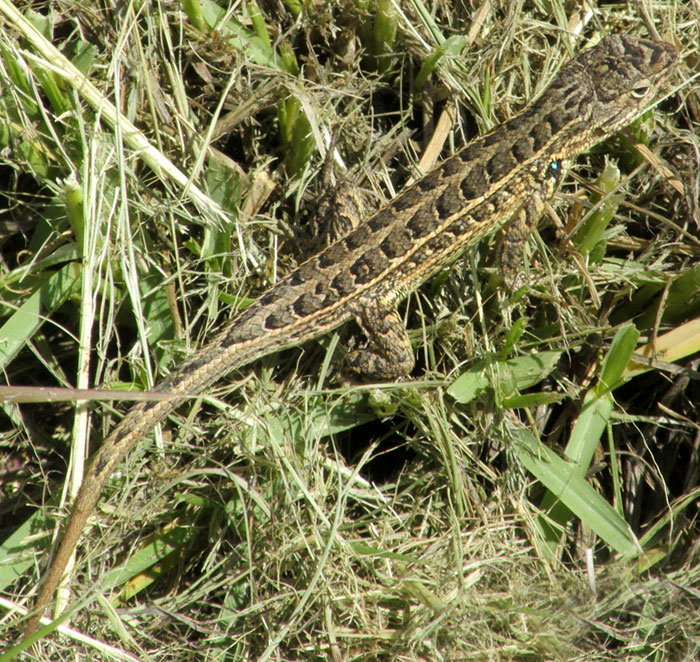Excerpts from Jim Conrad's
Naturalist Newsletter
entry dated September 11, 2022, notes from San Pedro Huimilpan, elevation about 2400m (7900ft), N20.315° W100.281°, Querétaro state, MÉXICO
BUNCHGRASS LIZARD

In a grassy fruit orchard on a mountain slope at the eastern side of San Pedro Huimilpan, the above lizard was fairly well camouflaged as it remained motionless in the sunny, sheep-grazed grass. North Americans who pay attention to lizards may recognize this as a spiny, or fence lizard. For example, with its general form, rough scaliness, lines running along its body, and blocky head, it's somewhat like the Texas Spiny Lizard seen in Texas.
Spiny and fence lizards are members of the big lizard-genus Sceloporus, which embraces 113 or so species occurring only in the Americas from Canada south to Panama. The genera's center of species diversity is here in Mexico. Its species' numbers resonate with the fact that the Mexican highlands are a global biodiversity hotspot with an exceptionally high number of species of different organism types endemic just to this area.

No field guides for lizards is available for this part of the world so for me identification to species level comes down to doing an image search on the Internet, using the keywords "Sceloporus Querétaro." Our lizard matches pictures labeled as the Bunchgrass Lizard, SCELOPORUS AENEUS*, for example at the international Reptile-Database.Org website.
*UPDATE: Sceloporus scalaris was my best bet, but later when the pictures were uploaded to the iNaturalist website, user "carl_sands" recognized the very closely related SCELOPORUS SCALARIS, also known as Bunch Grass Lizard. User "carl_sands" seems much more focused on Mexican lizards than I, so I'm using his name. Just by comparing images on the Internet, I can't see clear differences between the species.
"The Reptile Database" page for Sceloporus scalaris reports that "the S. scalaris species group" includes five monotypic species and two polytypic species, of which Sceloporus aeneus is one of the two polytypic species. Polytypic species are those containing two or more subspecies. The distributions of S. scalaris and S. aeneus are mostly overlapping, though S. aeneus is less documented in northwestern Mexico.
Whatever the case, I'm not debating the name with anyone specializing in Mexican lizards.